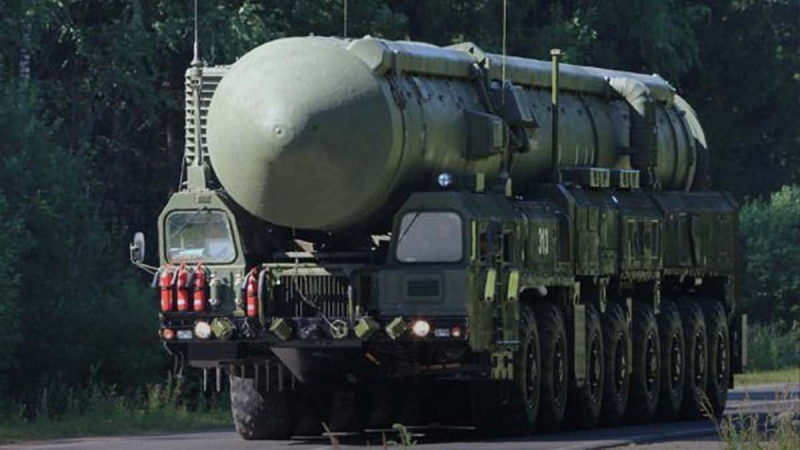A real threat or a scare tactic: can Russia use the Rubezh ballistic missile? Angela Figin Information has spread in the media about a possible strike on Ukraine by the Russian ballistic missile “Rubezh”. According to monitors, such a possibility allegedly exists due to the success of the Ukrainian Armed Forces' strikes on Russian military facilities. In fact, the first report said that Russia was going to test the RS-26 Rubezh missile from the Kapustin Yar test site in the Astrakhan region, Defense Express editor-in-chief Oleg Katkov told Channel 24. Then they started fantasizing about the missile's strike on Ukraine, that it was nuclear, and so on. The RS-26 Rubezh is a medium-range ballistic missile, whose first flight took place back in 2011. The development of the RS-26 was actually completed in 2015, but this missile violated the Intermediate-Range Nuclear Forces Treaty. Russia did not officially put the RS-26 Rubezh into service and did not include it in the rearmament program of the Russian armed forces until 2027. However, in the summer of 2024, the Kremlin announced that it would develop medium-range missiles. Against this background, it is quite possible that the Russians really managed to produce new models of the RS-26 Rubezh. Apparently, it was created on the basis of two stages from the Topol-M and Yars intercontinental ballistic missiles. In fact, we are talking about the reincarnation of the famous Soviet medium-range Pioneer missile, Katkov said. The Rubezh missile is designed to hit targets at a range of up to 600 kilometers. It can carry up to 4 warheads with nuclear warheads with individual guidance. Each with a capacity of 300 kilotons. Please note! Deputy Director of the Army Research Center Mikhail Samus said that it is difficult to say yet whether the Patriot air defense system will be able to shoot down the Rubezh missile. After all, the ballistic trajectory of such a missile is higher. That is, in fact, it will be a missile that must be shot down in the stratosphere, and not when it approaches the target. The editor-in-chief of Defense Express noted that no one will trust the Rubezh missile, which is still in the testing stage, with the mission of delivering a nuclear strike on Ukraine. Russia has significantly more reliable and accessible means of nuclear destruction. Iskanders, Kh-101s, Tsirkons, Kinzhals, and Kh-22s can be nuclear. The Russians use these weapons on a regular basis. Their launch will in no way differ from the launch of a missile with a conventional warhead. Therefore, there is no need for Russia to use any single missile to start a nuclear war, Katkov noted. In addition, a single launch of a medium-range or intercontinental ballistic missile by Russia without notifying the United States could start World War III. Hundreds of medium-range ballistic missiles called Pershing were previously deployed in Western Europe. The editor-in-chief of Defense Express told whether NATO countries or the United States currently have an equivalent of the Rubezh missile in their arsenal. The problem is that all Pershing I and Pershing II missiles were cut up in 1991. Moreover, the Pershing I missiles were in service with the Bundeswehr, but it was also forced to abandon them in 1991, explained the editor-in-chief of Defense Express. Currently, NATO countries as a whole do not have medium-range ballistic missiles. Only the United States, as part of one division at Cape Canaveral, has a system with a hypersonic glide vehicle, which has a range of 2,000 kilometers. For now, it is in experimental status. Only in 2025 should the first battery be deployed, and in 2028 the second. In fact, the situation for NATO and the United States is not very positive with this “Rubezh”, because Russia can scale up production quite quickly. At the same time, the US took a different path – developing a completely new missile with different hypersonic capabilities, Katkov added. Europe is not even talking about having medium-range ballistic missiles in service. The most they have set their sights on so far is the ELSA project. This is the creation of a ground-based cruise missile with a range of approximately 1,000 kilometers.What is known about the Rubezh missile
Why Russia won't hit Ukraine with RS-26
Does NATO have an equivalent of the Rubezh?
Real Threat or Scaremongering: Could Russia Use the Rubezh Ballistic Missile?
9

